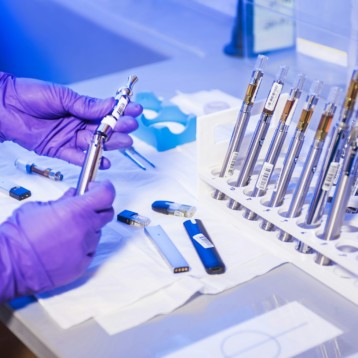|
APL is a sub-type of AML (acute myelogenous leukemia), and is common at the relatively young age of 40 (AML is common at the age of about 70). In 1992, ATO was found to be the active ingredient in a traditional Chinese medicine and was used against APL in relapsed cases or when the tumor was resistant to other drugs. Because Arsenic damage DNA it usually encourages the development of tumors.
APL is an outcome of a genetic mutation that causes two proteins, namely PML and RARa, to fuse. The fused protein causes the tumor. The scientists found that when Arsenic is present in the cell, the fused protein PML-RARa is marked for degradation by Ubiquitin, which is associated protein RNF4. The degradation of the chimera saves the cell from becoming a cancerous one. In fact, Arsenic marks the protein causing the APL for degradation, turning the cancer cells back into normal cells.
The researchers showed that RNF4 is the factor affected by the Arsenic. They took cell lines bearing a malfunctioning RNF4 protein and observed that the ATO was not effective. When RNF4 was introduced to the cells, the ATO regained its effect. To date, the pathway in which ATO causes the RNF4 to mark the chimeric protein for degradation is has yet to be fully understood. Understanding this pathway will help in appreciating the true power of Arsenic in cancer therapy.
The final goal of this research project is to find a safe, ATO-based cure for APL and other related types of cancer. By gaining a full understanding of the pathway that leads to the degradation of the fused PML-RARa protein, it will be possible to determine the influence of Arsenic on the cell. Once the mechanism is known, other compounds could be used to replace this poisonous material in the treatment of cancer.
TFOT has recently covered several other advanced cancer therapeutic techniques. These include an immune therapy method for directly targeting cancer cells, developed by Professor Shimon Slavin from the Tel Aviv University in Israel, and a therapeutic strategy developed against breast cancer, based on chemotherapy and microwave energy, which was developed by researchers from the Massachusetts Institute of Technology.
More information can be found in the European Union’s research headlines webpage.











